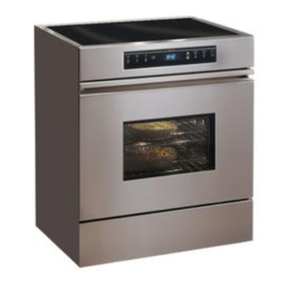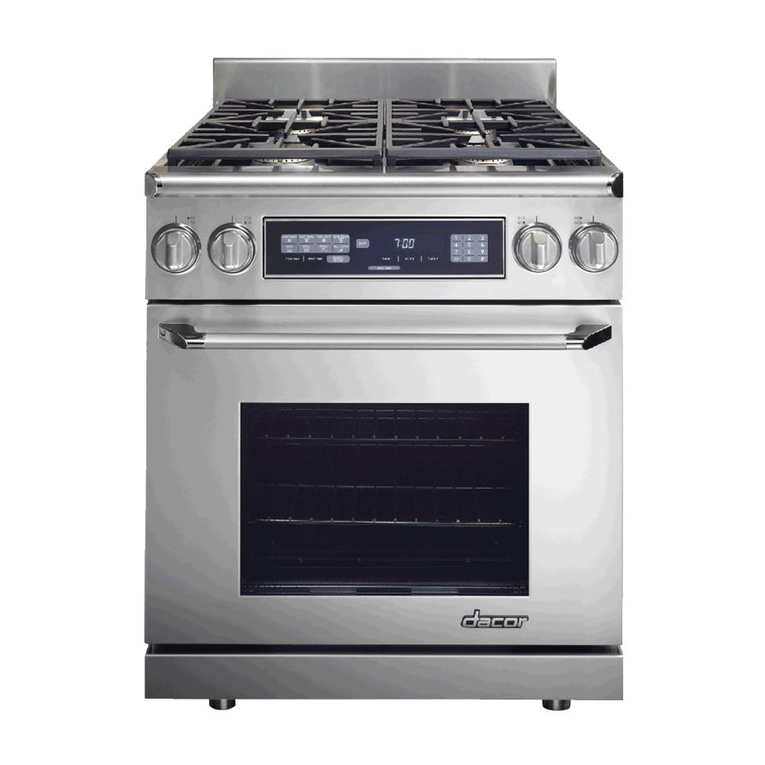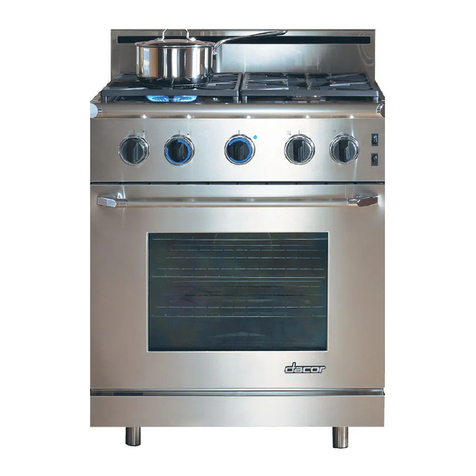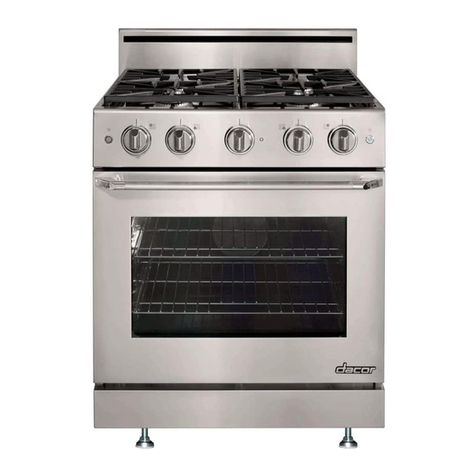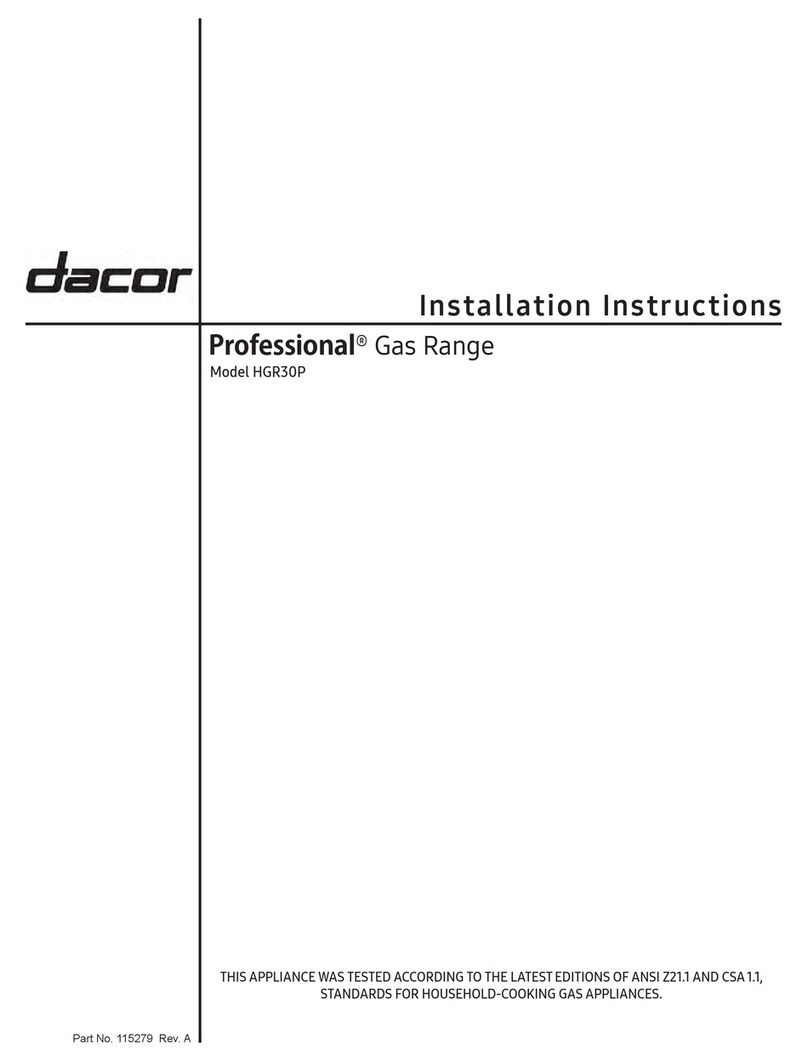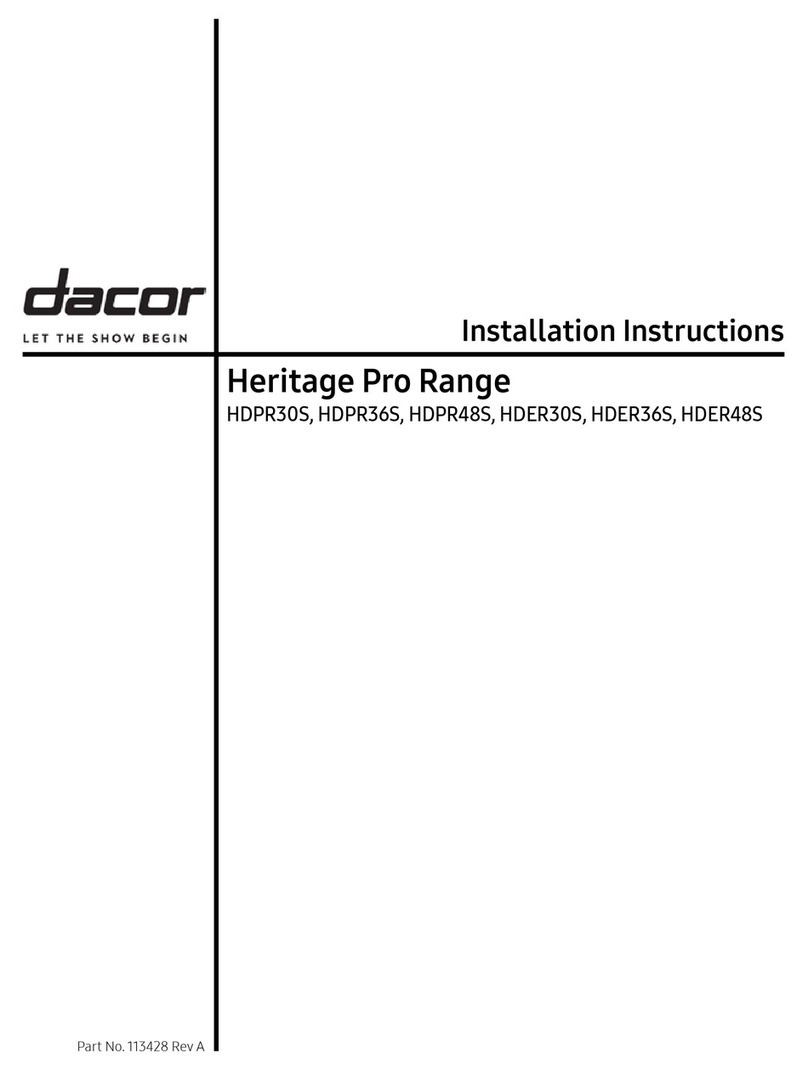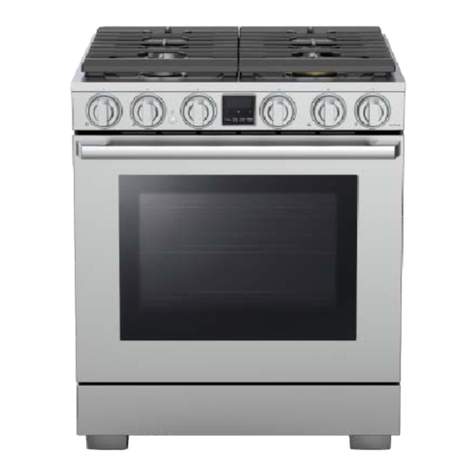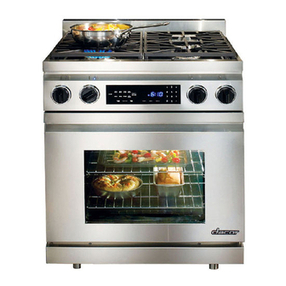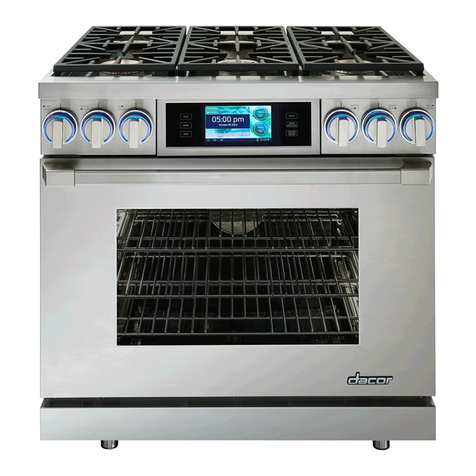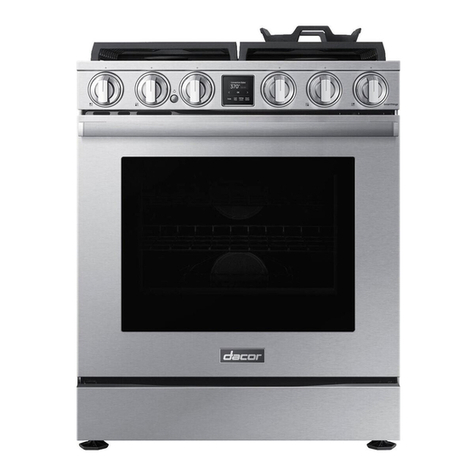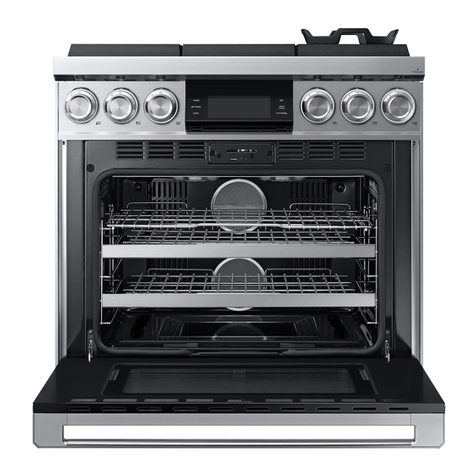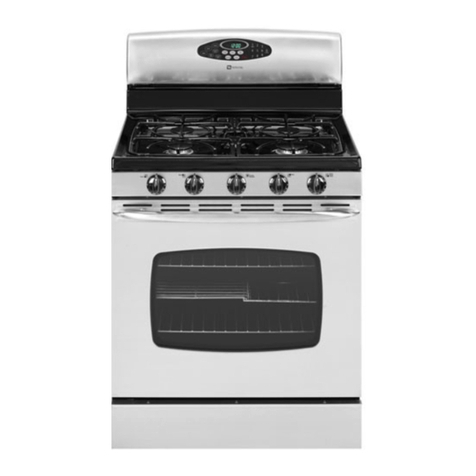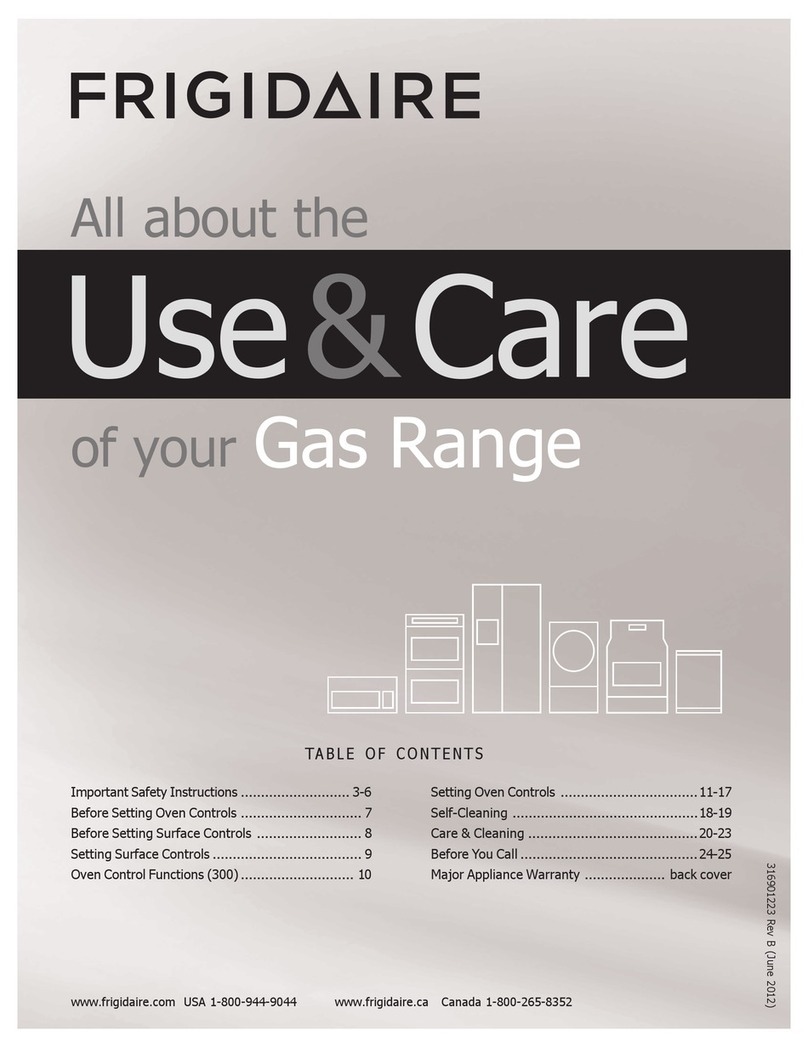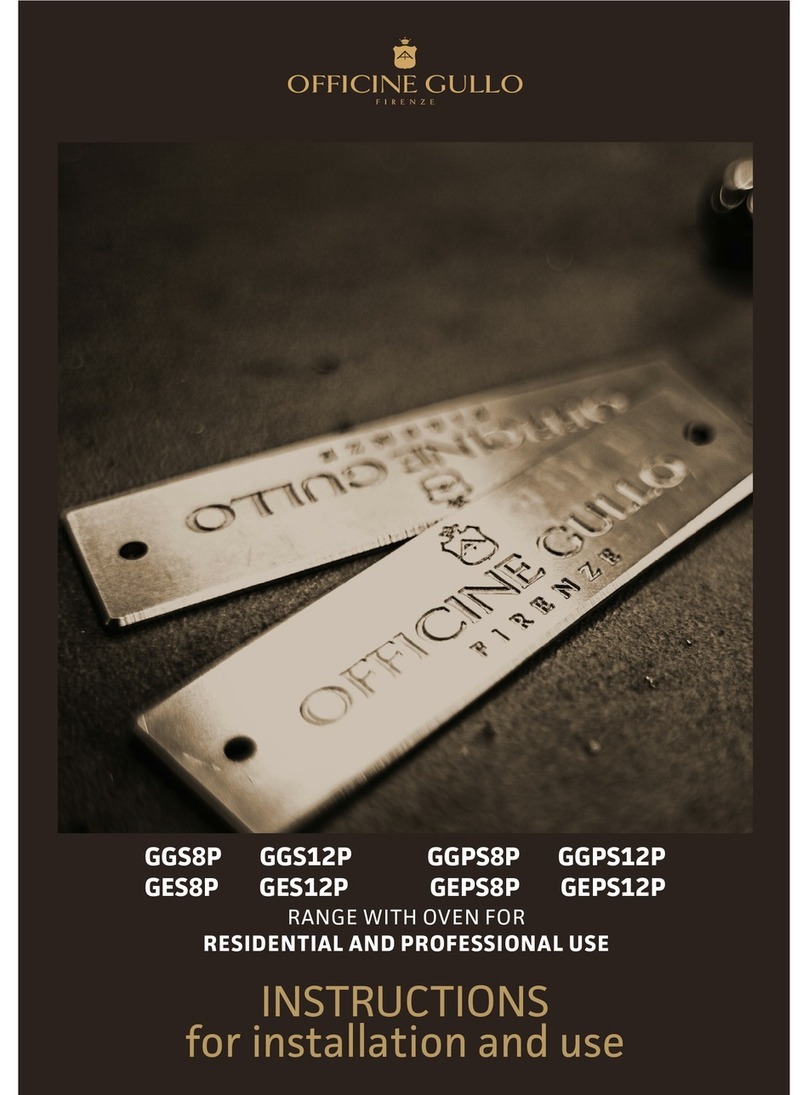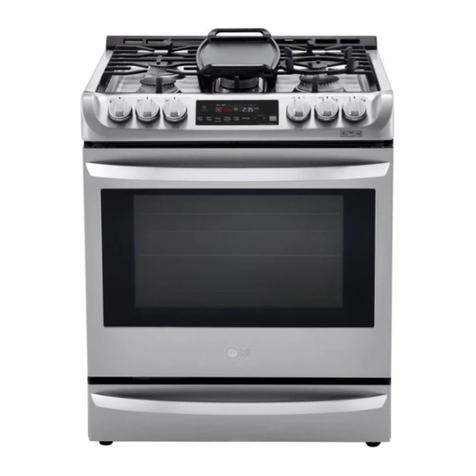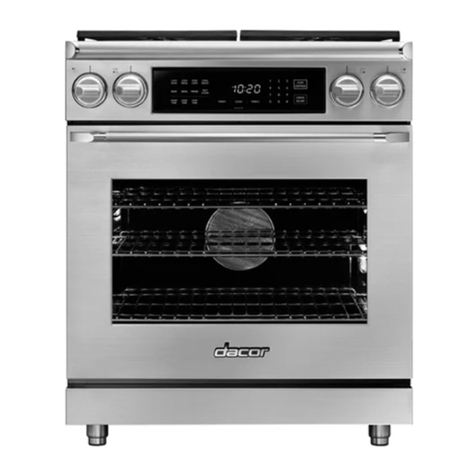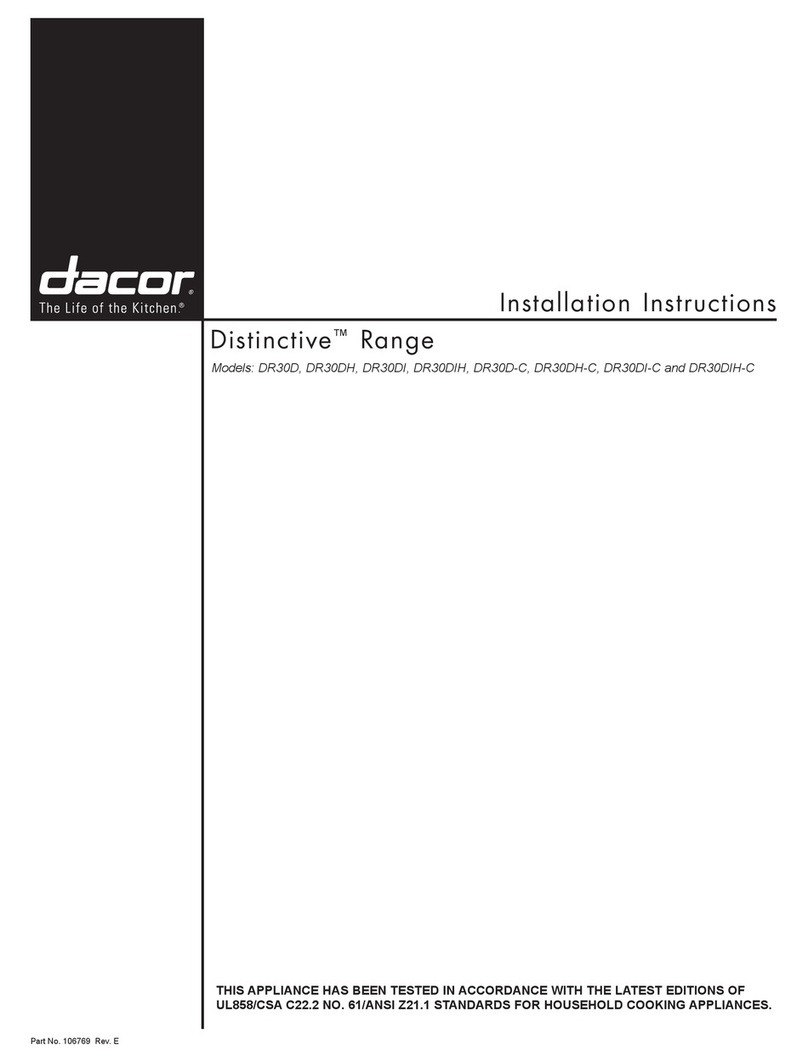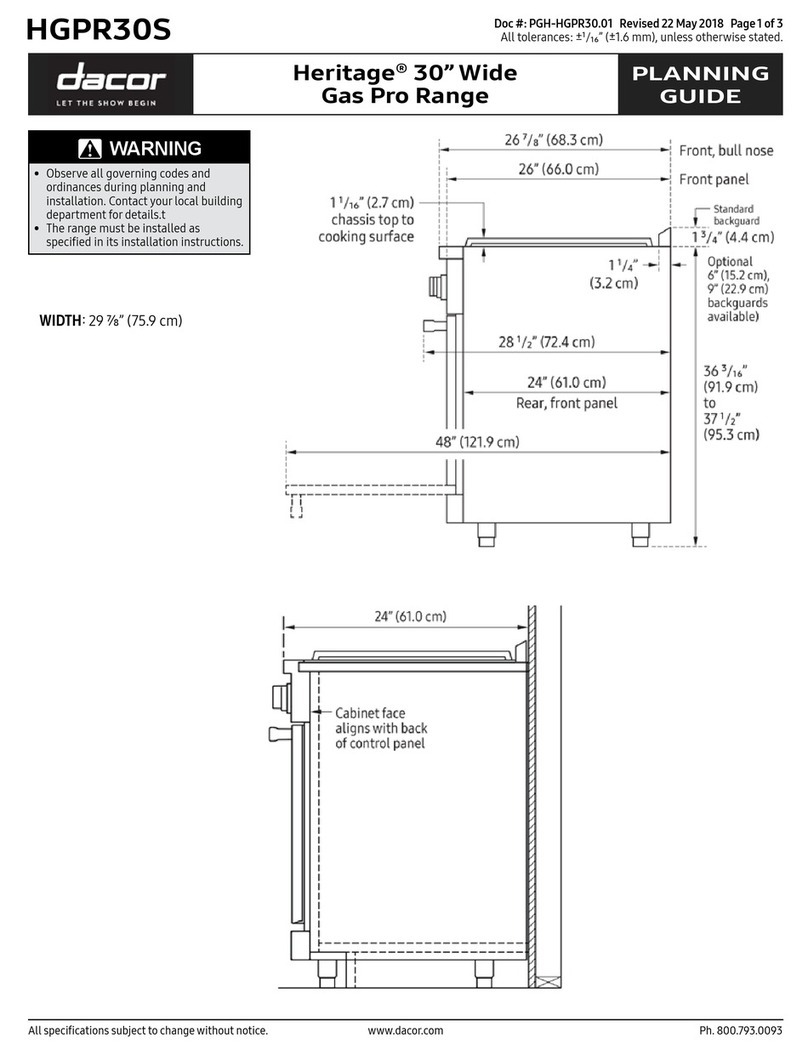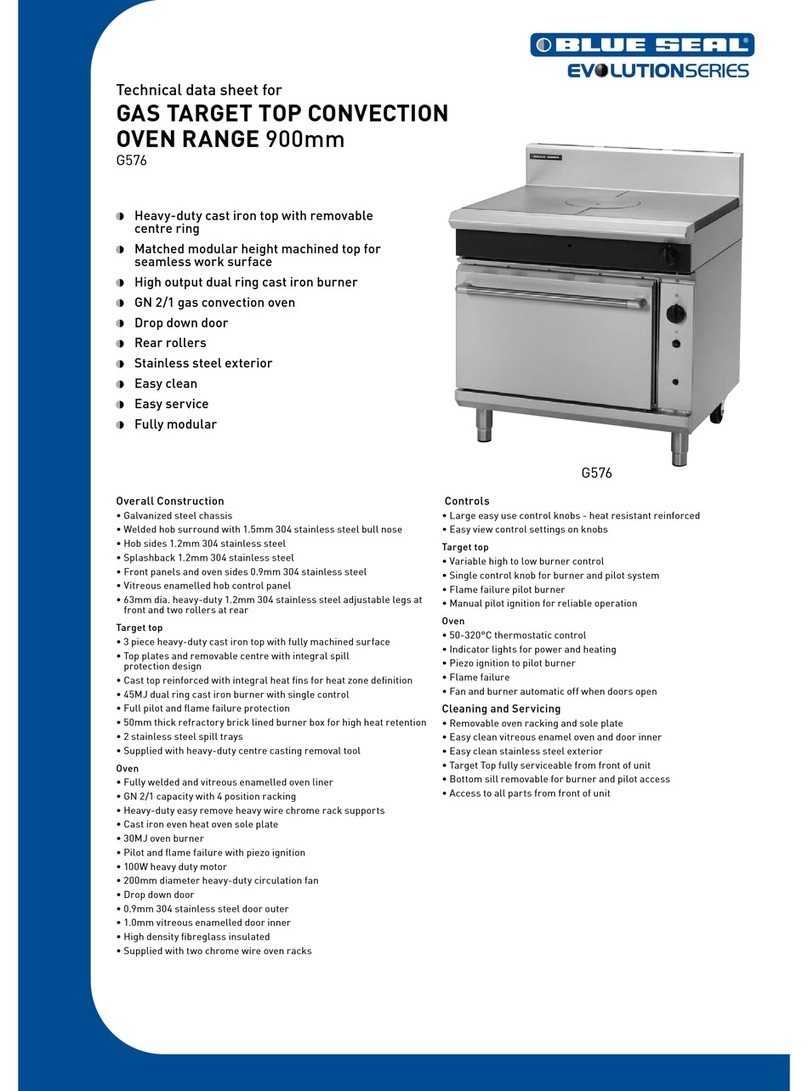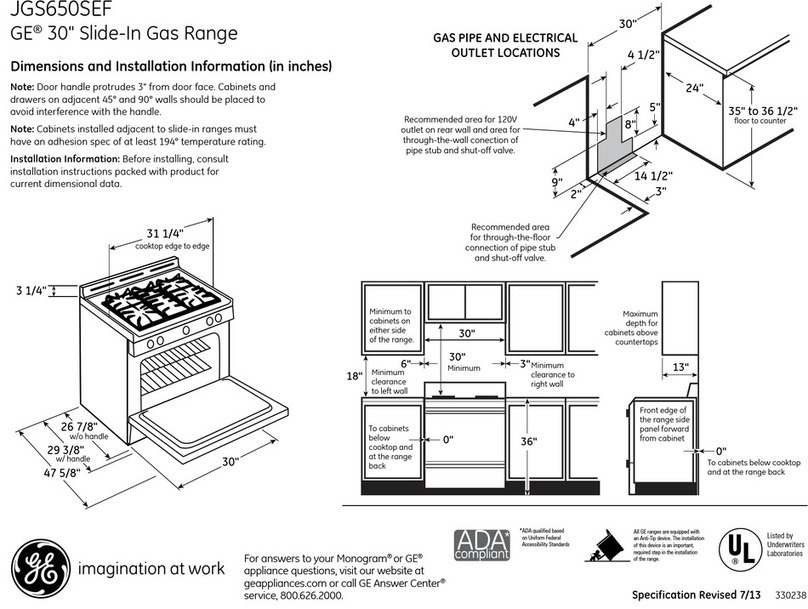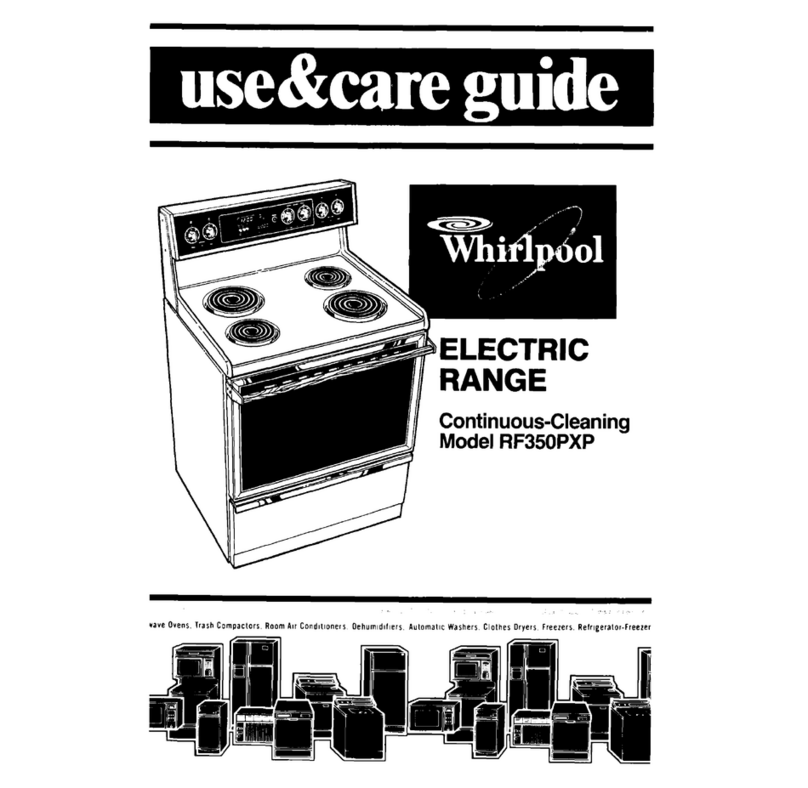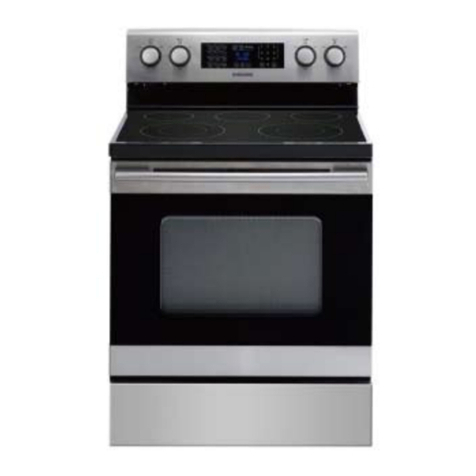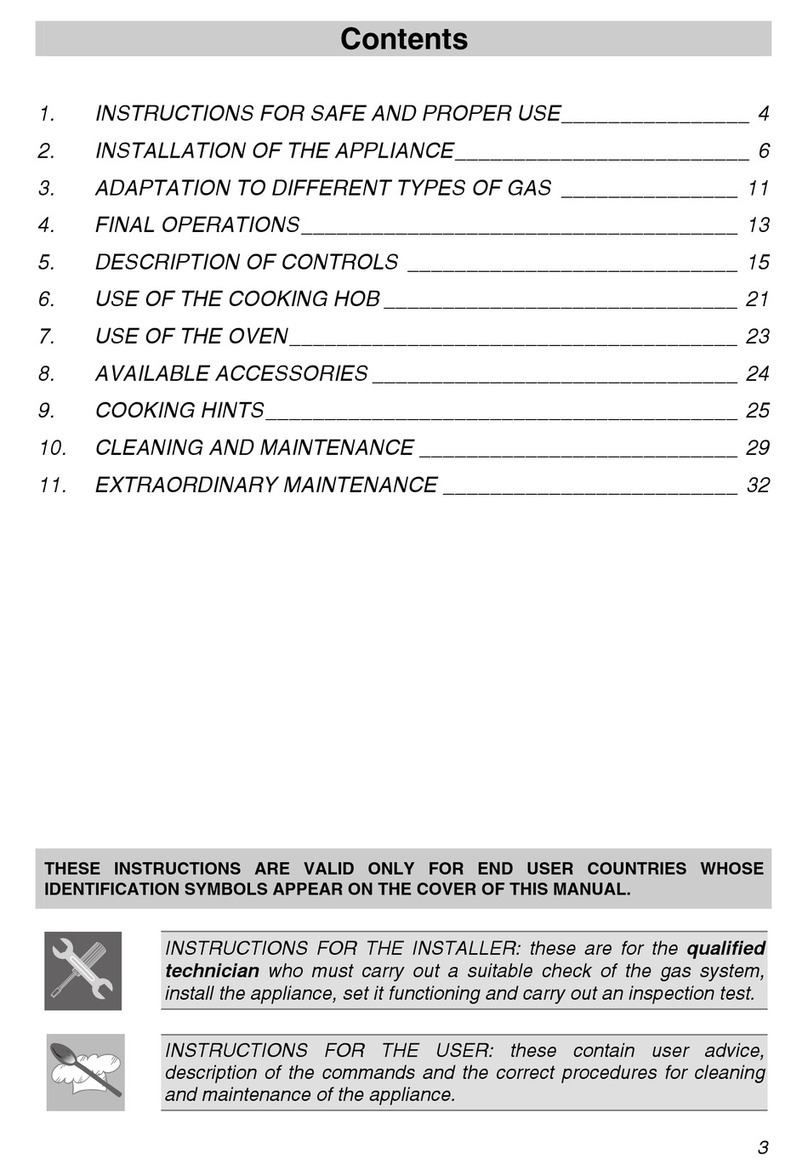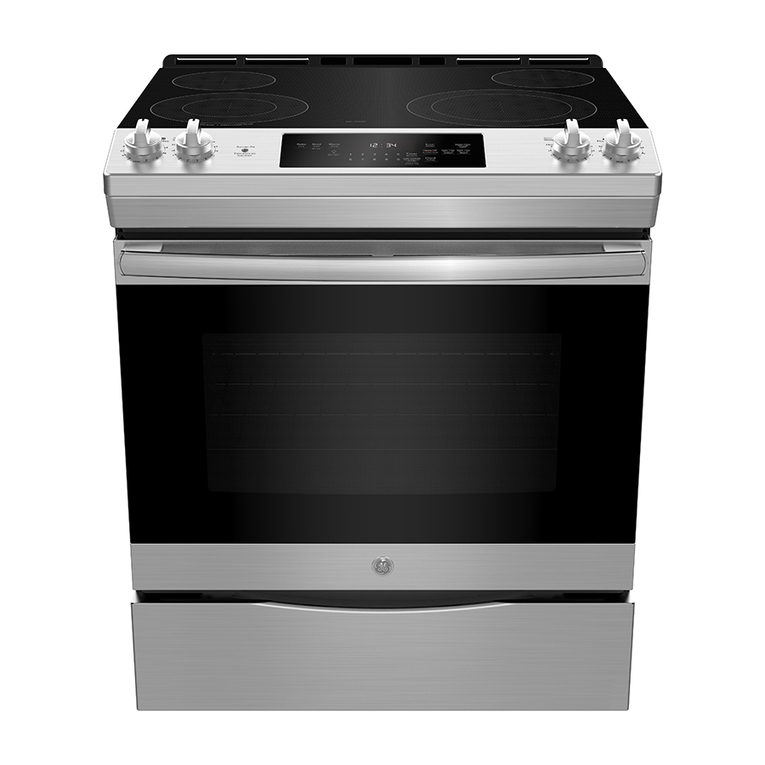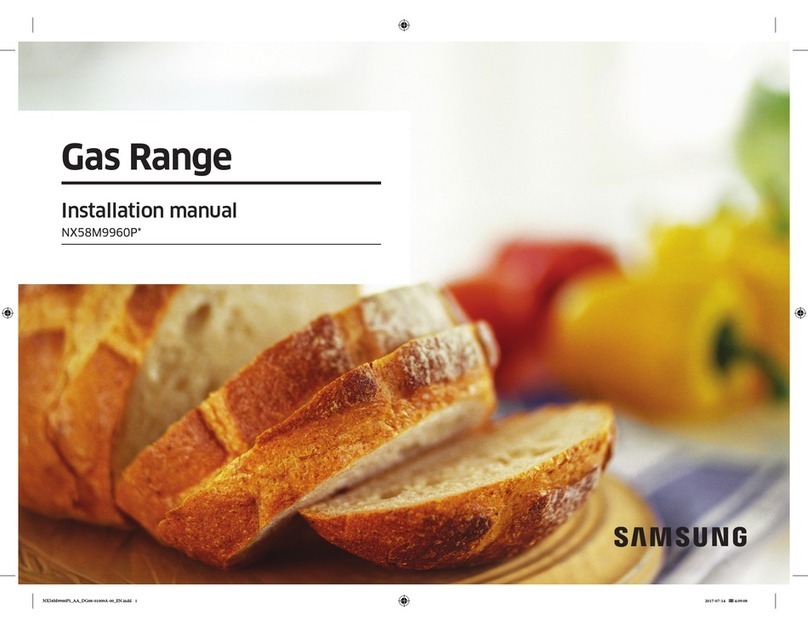
6
Securing the Oven Controls
To avoid accidentally turning the oven on, activate the
securefeature.PressandholdtheCANCEL•SECURE
pad for approximately three seconds. Doing so will disable
the control panel and allow cleaning the controls without
accidentally starting any functions. Three beeps will sound
and “OFF” will appear in the display when the control panel
has been secured.
To re-activate the control panel, again push and hold the
CANCEL•SECUREpadforthreeseconds.Threebeepswill
sound and “OFF” will disappear from the display.
Baking
In addition to the conventional radiant-heat Standard Bake
mode, this Dacor range offers two additional baking modes:
Pure Convection and Convection Bake.
As a general rule, a convection mode will allow preparation
of most foods at reduced temperatures for shorter periods
of time, while also producing superior results. Typically you
canreducethestandardtemperatureby25˚Fandcookfor
10% less time. Baked goods will have golden-brown crusts
with flaky textures, and meats will have crispy exteriors with
succulent juices sealed inside.
Because of variations in food density, surface texture and
consistency, there are a few foods that may be prepared
more successfully in the Standard Bake mode. For this
reason, Bake mode is recommended when preparing
baked goods such as custard.
To convert conventional bake recipes to convection•
recipes,reducetemperatureby25˚Fandthecooking
time by approximately 10%.
Some recipes, especially those that are homemade,•
may require adjustment and testing when converting
from standard to convection modes. If unsure how to
convert a recipe, begin by preparing the recipe in Bake
mode. After achieving acceptable results, follow the
convection guidelines. If the food is not prepared to
your satisfaction during this first convection trial, adjust
only one recipe variable at a time (such as cooking
time, rack position or temperature) and repeat the
convection test. If necessary, continue adjusting one
recipe variable at a time until satisfactory results are
achieved.
Do not open the oven door frequently during baking.•
Look through the door window to check the progress of
baking whenever possible.
Use the minute timers to time baking functions.•
Wait until the shortest recommended baking time•
before checking food. For baked goods, a wooden pick
placed in the center should come clean when the food
is done.
Measure ingredients carefully and follow tested recipes•
for best baking results.
Oven Operation
Adjustments to recipe times and temperatures will need•
to be made when baking at high altitudes. Consult a
cookbook on high-altitude cooking or contact the Home
Economics Departments at your state university for
specific recommendations.
Bakeware Tips:
Use the pan size and type recommended by the recipe•
to ensure best results.
Cakes, quick breads, muffins and cookies should be•
baked in shiny, reflective pans for light, golden crusts.
Medium gauge aluminum sheets with low sides should•
be used when preparing cookies, biscuits and cream
puffs.
Bake most frozen foods in their original foil containers•
placed on a flat cookie sheet. Follow the package
recommendations.
When using glass bakeware, reduce the recipe•
temperatureby25˚F,exceptwhenbakingpiesoryeast
breads. Follow the standard recipe baking time for pies
and yeast breads.
Avoid the use of old, darkened pans.•
Warped, dented, stainless steel and tin-coated pans•
heat unevenly and will not give uniform baking results.
Place pans carefully on the oven racks. Turn pans on•
the racks so that the long sides run left to right, parallel
to the door.
NOTE: For common baking problems refer to your Dacor
cookbook. Your complimentary cookbook was packed with
your range. If you did not receive your cookbook, please
contact Dacor at (800) 793-0093 or at www.Dacor.com.
Roasting
All baking modes can be used to successfully roast in your
oven. However, the convection modes are recommended
to produce meats that are deliciously seared on the outside
and succulently juicy on the inside in record time. Foods
that are exceptional, when prepared in a convection mode,
include: beef, pork, ham, lamb, turkey, chicken and cornish
hens.
To convert conventional bake recipes to convection•
recipes,reducethetemperatureby25˚Fandthe
cooking time by approximately 10%.
When using a roasting rack, always roast meats fat•
side up in a shallow pan. Always use a pan that fits
the size of the food being prepared. The broiler pan
and grill, accompanying the oven, can be used in most
cases. No basting is required when the fat side is up.
Do not add water to the pan. It will cause a steamed
effect. Roasting is a dry heat process.
